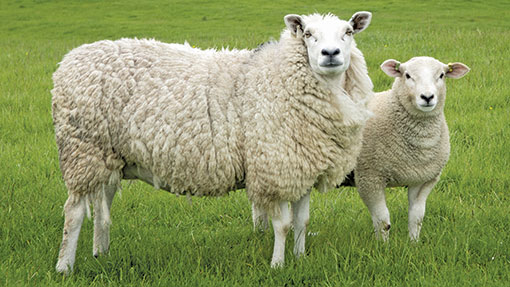Data recording vital to spot the best ewes

Collecting data is essential in identifying higher-performing breeding ewes. Debbie James finds out how it has helped one Scottish couple.
Performance recording is allowing a pedigree Lleyn producer to accelerate lamb weight gains and achieve top carcass specification grades.
Derek Steen and his wife, Cindy, run a 2,500-ewe flock including 1,000 pedigree Lleyns. They have recorded performance since they established the Lleyn flock in 1989, but for the first 20 years this was done manually.
“We quickly realised that if we wanted to improve the flock we had to find out what we had. What we discovered at the beginning was that we had some mediocre sheep,” Mr Steen recalls.
See also Boost sheep output by performance recording
They recorded the details of the dam and sire of every lamb born together with the lamb’s weight at eight weeks. “We identified the bottom 10% of those lambs and culled their mothers. That was when we saw a real improvement,” he says.
In 2006 they took recording a step further by adopting the Signet genetic evaluation service. “It gave credence to our recording,” he says.
“Nearly all of our sales are on-farm so buyers can come here to see specific tups. Rather than showing them 80 tups they can ask to see the five they are interested in, having already referred to the performance records, and buy from those.”
As the flock grew in numbers, the Steens invested in Border Software electronic recording equipment and its software package.
Although it hasn’t necessarily speeded up the recording at lambing time, what it has done is to make weighing and selection throughout the lamb’s life a very simple task and eliminates the risk of human error. It has also allowed the information gathered to be more meaningful because it can be accessed easily.
“For the rest of a lamb’s life, every time you record its weight or look at its parentage, it can all be done by the computer,” says Mr Steen.
It has enabled comparisons of the progeny of individual sires and the performance of ewes year on year. “We could do this with pen and paper, but it was very tedious wading through the records. And because technology makes the process easier we use it more,” he explains.
“When we started with Border Software we had spent 20 years improving the flock so it was already high performance. It made further improvement more of a challenge.”
But there has been a very definite genetic gain. Figures for the three seasons from 2009 show that eight-week lamb weights across the flock have increased by an average of 2kg.
Twins gained an average of 350g a day and singles 400g, all without creep feed.
“Up to eight weeks, any gains are achieved solely from the ewes’ ability to produce milk, after that it is down to forage.
Recording allows us to identify the best-performing ewes from eight-week weights and to use this as a guide to identifying the best-performing ewes and to select their progeny.”
The land at Whitcastles Farm, near Lockerbie, rises from 750ft to 1,000ft and a large percentage is rough grazing.
The Steens have used selection to breed animals that thrive in this environment. “We can’t improve the land, but we can further improve the performance or output of the flock by using genetics. How else could we have achieved genetic gain other than through recording?” Mr Steen says.
“We have been careful to breed sheep that can convert the type of forage our farm will grow,” he adds.
There have been dramatic improvements in carcass quality, too, since recorded information was used to select tups.
A decade ago, 10% of lambs would have achieved O grades, with 80% classified as R, and the remaining 10% U.
In the past three years, there have been no O grades and in 2013 data returned by the processor showed that 51% of the pure Lleyn lambs achieved U grades for confirmation, while the number of E grades was less than 3%.
“By selecting tups with good eye muscle we have been able to make much bigger improvements in the confirmation of our lambs,” he says.
The Steens sell their prime lamb through Scotbeef, supplying Marks & Spencer, the Co-operative Group and a large export market.
Mr Steen believes performance figures are an excellent tool for assisting breeding decisions.
He would recommend performance recording, especially to pedigree producers. “One of the biggest benefits is that we can present our clients with credible data; it gives them factual information that they can base their selection on.
“I feel it is almost the duty of people selling breeding sheep to performance record; it is something we should all do to improve the national flock. It is a means of lifting the performance of what we do. No dairy farmer would AI their cows without knowing the breeding performance of a bull; it just wouldn’t happen.”
